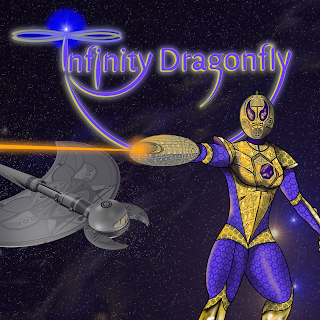Review: Green Lantern - Far Sector
Fundamentally, all superhero stories are science fiction. The Man of Steel himself is an alien. Costumed vigilantes get their superpowers via radiation, genetic mutation, exotic technology, etc. With a few exceptions - the magically enhanced Shazam and Witchblade - caped crusaders have a sci-fi origin story to lift them out of mundane reality.
So why do we count it as a separate genre? Because in most cases the setting of the hero's saga is plain old contemporary Earth. Their arch-nemeses tend to be humans with similarly acquired abilities but rarely do their exploits take them away from this planet, or feature visitors from other worlds.
A certain significant chunk of the readership like stories that take place in the world with which they are familiar. The fantasy element works well in contrast with a realistic arena. This is the complimentary opposite of most science fiction, in which the central characters are ordinary humans and the settings are fantastical.
There are exceptions, of course. The Fantastic Four are often to be found boldly going to take the fight to the Skrulls, Galactus, etc. The Guardians of the Galaxy are 'proper' sci-fi heroes, and so are DC's Green Lantern Corps, a multispecies intergalactic police force endowed with enhanced abilities of their power rings.
The original 'Silver Age' Green Lantern narrative begins in 1959 with American test pot Hal Jordan, who is given his power ring by a dying alien. Jordan used his powers to fight evil both on Earth and off it, and was the first of several human members of the Green Lantern Corps. Another human recruit was John Stewart, DC's first African American superhero in 1971.
There are exceptions, of course. The Fantastic Four are often to be found boldly going to take the fight to the Skrulls, Galactus, etc. The Guardians of the Galaxy are 'proper' sci-fi heroes, and so are DC's Green Lantern Corps, a multispecies intergalactic police force endowed with enhanced abilities of their power rings.
The original 'Silver Age' Green Lantern narrative begins in 1959 with American test pot Hal Jordan, who is given his power ring by a dying alien. Jordan used his powers to fight evil both on Earth and off it, and was the first of several human members of the Green Lantern Corps. Another human recruit was John Stewart, DC's first African American superhero in 1971.
Far Sector is the story of Sojourner "Jo" Mullein, human rookie Green Lantern, investigating a murder on a very alien world, very far from Earth. The City Enduring is a Dyson Sphere built around a star from the wreckage of a war between three species of the same system. Descendants of the survivors live in harmony thanks to the expulsion of all emotion (the 'Exploit'). So how is murder possible in a society with no passions? Well, as ever, no Utopia is without flaws. This one has a drug problem: 'switchoff' neutralises the Exploit, allowing its users to experience the full range of emotions.... often with disastrous results.
Jo's task is a tough one. Like any cop, she is an outsider dealing with suspects and witnesses for her investigation, but here even more so. And being the only human in a city of twenty billion is not the most alien thing about her, her ability to feel and yet control her own emotions is what truly sets her apart.
The issues here are differences of race and culture, but ironically Jo being black is irrelevant. As the legendary science fiction author Samuel R Delaney once said, if you are the only human in town, the colour of your skin is not a consideration.
Jo experiences racism, but on the basis of her species. When a character addresses her, tersely, as "human", it could almost be the N word. Humans are regarded as a technologically inferior, dangerously emotional people. How can she possibly be a good choice for this role? And yet those very differences indeed make her the best fit because, in Utopia, where there has been no murder for more than 500 years, an outsider is exactly what is needed.
This is pure sci-fi and done excellently. Writer N. K. Jemisin has crafted a richly detailed world with fascinating elements, brought vividly to life by artist Jamal Campbell. The panels are glossy and dazzling, full of futuristic designs and fascinating large vistas.
Everything you love about sci-fi is here. Every aspect of it is flawless. This one will truly transport you to another world, which is exactly what you want in a good space comic.
Far Sector from DCEverything you love about sci-fi is here. Every aspect of it is flawless. This one will truly transport you to another world, which is exactly what you want in a good space comic.




Comments
Post a Comment